Ultimate Guide to Marketing Resource Management: Benefits, Challenges, & Best Practices
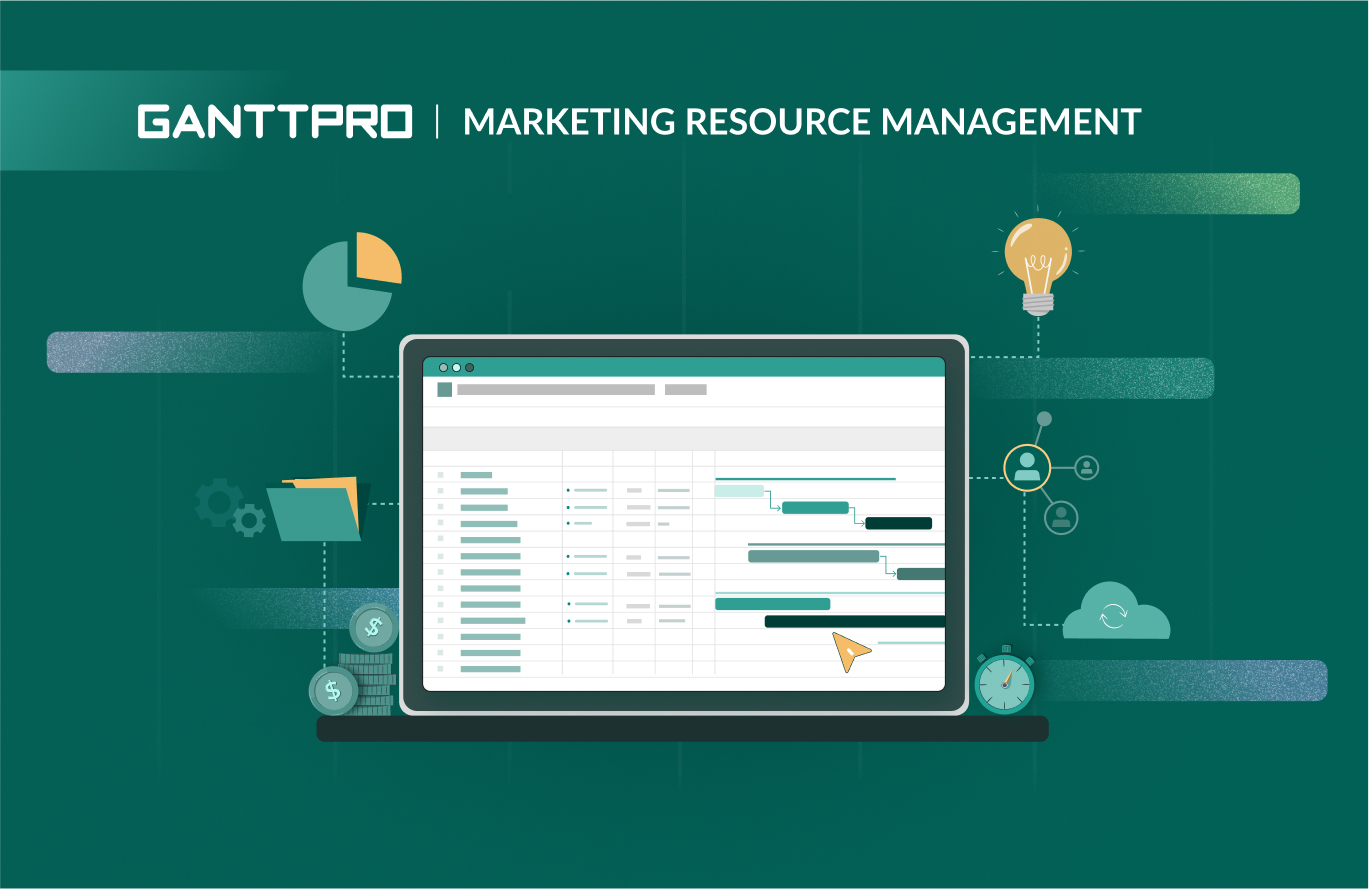
Audio version:
Marketing teams work with a diverse array of resources needed to complete their projects and campaigns. They have to make prompt decisions, change focus when necessary, and organize marketing assets to uphold a streamlined and efficient workflow.
One of the cornerstones of their success is proficient marketing resource management (MRM). It empowers them to maintain a firm grasp on all resources, thereby simplifying their professional lives.
The global marketing resource management market is anticipated to expand from USD 3.2 billion in 2021 to USD 5.5 billion by 2026. This certainly demonstrates the importance of this management area.
What is the power of competent work with resources, and why is it important for marketing project management?
Below we figure out how professional marketing resource management improves workflows and takes marketing operations to the next level.
Contents:
- What is marketing resource management (MRM)?
- What is MRM 2.0?
- What are the benefits of marketing resource management?
- What are the challenges in implementing MRM?
- Best practices for implementing marketing resource management.
What is marketing resource management (MRM)?
Marketing resource management is a set of processes and technologies that help marketing teams plan and manage their resources and enhance marketing operations.
These resources typically include:
- People.
- Money.
- Time.
- Technology.
MRM involves a range of activities, from scheduling and budgeting to resource allocation and performance tracking. It serves as the central hub that connects all these activities and ensures that they are executed in a coordinated manner.
This field has been actively developing in recent years. It was acknowledged by Gartner when they unveiled MRM 2.0.
What is MRM 2.0?
Previously, marketing resource management solutions predominantly leaned on all-in-one software systems. They encompassed a wide range of marketing management processes and requirements. However, the concept of MRM has changed over time.
In 2017, Gartner presented their research with the new definition of MRM 2.0.
Christopher Ross and Adam Sarner, the analysts who participated in the research, stated:
The tools and technologies known as marketing resource management have evolved. Marketing leaders can use this research to understand and embrace the vendors and solutions that deliver improved marketing operational efficiency and business impact through MRM’s evolution.
Gartner mentioned professional marketing tools that fall into three categories of marketing management:
- Work management. It encompasses the coordination of marketing inputs and various elements connected to the creation of assets through collaborative teamwork.
- Asset management. It involves managing marketing outputs that may include implementation and organization of marketing assets.
- Performance management. It’s about tracking marketing achievements, including the evaluation of the overall performance of a marketing department.
It means that the modern concept of MRM allows marketers to manage people, content, money, and brand strategy. It covers all of the processes that involve the participation of marketing specialists or marketing departments, from strategic planning to production.
MRM 2.0. also includes approvals, metric tracking, contracts, and reporting.
The new definition of MRM clarifies the functional scope and provides a more intuitive clustering of features. It is not about a drastic shift in how businesses manage their marketing resources. It’s more about an effort to capture how companies’ needs are best served through several core technologies.
Now is the time to move on to exploring the strengths of MRM.
What are the benefits of marketing resource management?
- Improved efficiency.
- Effective resource allocation.
- Streamlined workflows.
- Reduced costs.
- Saved time.
- Seamless collaboration.
- Better scalability.
- Better resource tracking.
- Risk mitigation.
MRM assists businesses in achieving their strategic objectives by streamlining marketing operations, ultimately enhancing their competitive advantage.
Let’s explore the benefits of MRM marketing resource management and why businesses need it.
1. Improved efficiency
Marketing resource management streamlines marketing operations, assisting professionals in planning, collaboration, and execution. It leads to reduced manual effort, minimized duplication of work, and faster project completion times.
2. Effective resource allocation
MRM helps project managers allocate their marketing resources more effectively by providing insights into resource availability, utilization, and allocation across various projects and campaigns. It prevents the overallocation or underutilization of resources.
3. Streamlined work processes
Well-organized marketing resource management helps managers and decision-makers create, control, and streamline workflows by aligning people, defining milestones, and setting deadlines.
4. Reduced costs
By optimizing resource allocation and minimizing wastage, MRM helps in reducing marketing costs. You stop wasting time and money recreating marketing assets and duplicating work just because robust marketing project management tools help you do more with less.
MRM also facilitates better budget tracking and forecasting, leading to more accurate financial planning.
5. Saved time
Every minute you save while working on your marketing tasks is invaluable. Efficient MRM provides teams with automation and workflows to complete projects faster and save their quality.
It’s rather important, as, for example, an average employee spends at least 25% of a workweek looking for the docs and information they require to do their jobs.
6. Seamless collaboration
Ensuring efficient means of collaboration inside and across teams is vital to successful marketing resource management.
Modern MRM tools provide centralized access to information. Therefore, teams can work together seamlessly, reducing miscommunication and improving overall productivity.
7. Better scalability
As businesses grow and expand their marketing efforts, the practices of MRM can easily scale to accommodate increased workloads and demands. It will ensure that marketing operations remain efficient.
8. Better resource tracking
MRM allows companies to track the utilization of marketing assets, such as images, videos, and content. It enables better asset management, reduces content redundancies, and improves content reuse.
9. Risk mitigation
Identification of potential risks and issues early in the planning process is also a benefit of professional MRM marketing resource management. It allows teams to take corrective actions before they escalate into major problems.
Resource management in marketing is not only characterized by benefits but also deals with some challenges that marketing teams may face.
What are the challenges in implementing MRM?
Implementing MRM practices can be challenging for businesses. Especially for companies that haven’t used technology to manage their marketing campaigns before.
The participants of research conducted by Prosymmetry (2022) were asked to identify the most significant resource management challenges. The answer “visibility into the availability of resources” ranked 2nd with 41% after the answer “skills gaps and surpluses” with 66% accordingly.
Below are some other challenges businesses may face when implementing or trying to improve MRM.
- Inaccurate data. This is an obstacle that businesses can encounter while enhancing MRM. Marketing results depend on data that allows for getting valuable insights and steering strategies. Managers should ensure data accuracy and seamless accessibility throughout the entire company.
- Frequent changes. Implementing a new MRM system may require acquiring proficiency in new procedures or systems, which can pose difficulties and consume valuable time. To guarantee sufficient training and support for employees, it’s important to execute an effective change management strategy.
- Customization. Tailoring MRM practices to align with the distinct requirements of companies is a crucial step. However, customization can be a real challenge and demand an in-depth understanding of local marketing procedures, workflows, and existing systems.
- Integration of MRM into existing systems. This can be a significant hurdle that companies often encounter when trying to improve marketing resource management. Managers often use CRM or email marketing tools, so the process of integrating MRM solutions with them may become intricate and require time and resources.
From the potential challenges that managers and teams may face when working with marketing resources, let’s move on to the best practices in this area.
Best practices for implementing marketing resource management
How to implement effective marketing resource management processes within your resource management plan?
The sphere of MRM involves some fundamental practices that form its basis. Project managers should know and consider these practices to make the right decision when choosing a robust MRM software solution.
The practices described below demonstrate how MRM actually works.

1. Detailed planning
Almost all marketing campaigns begin with planning.
Generating a comprehensive marketing plan is vital for achieving all marketing goals and aligning them with business objectives. This plan should include thorough analyses of market trends, target audience, and rivals.
During this step, marketing teams:
- Arrange team meetings.
- Determine goals and objectives.
- Outline required strategies.
- Break goals into milestones.
- Create a timeline.
- Choose KPIs.
- Schedule deadlines, and more.
Professional marketing resource management helps marketing teams with strategic planning and execution of projects on time. It includes the creation of tasks, their allocation to staff, scheduling, management of vendors, and other activities.
At this stage, it is also important to choose appropriate marketing resource management software.
One of them is GanttPRO.
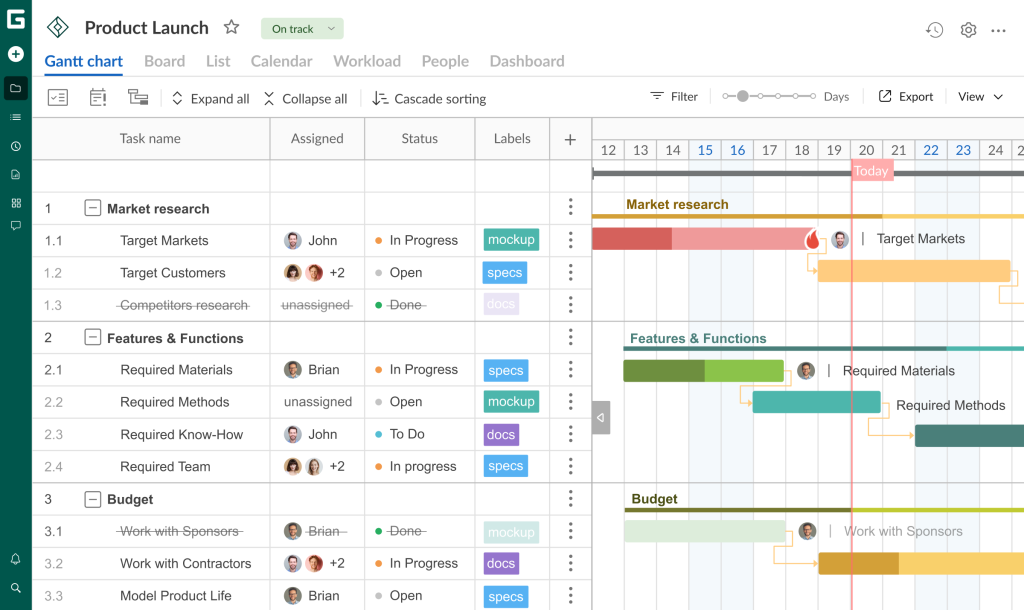
The online Gantt chart maker is known as a professional tool for planning, task management, and process management. It also helps organize various resources and gain complete control over staff, schedules, and costs.
GanttPRO allows for allocating resources with convenient drag-and-drop. You can simply invite members to your team and set roles and values for them.

Professional marketing resource management software
Plan and manage marketing resources and entire projects on a Gantt chart.
Sign up for freePlanning with a Gantt chart is not the only benefit of this software, as it offers many other useful features for managing marketing tasks and projects, including:
- Project scheduling.
- Task management.
- Deadline management.
- Budget management.
- Risk management.
- Portfolio management.
- Time tracking.
- History of changes.
- Integrations.
- Templates
- Reporting, and more.
GanttPRO proposes a set of professional features to plan and manage various resources that make it reliable resource management software.
2. Well-controlled workflow
If a company has no formal workflow process, it can be dangerous for its future.
When managers and teams do things differently, there’s no accountability for mistakes or credit for successes. It becomes evident when cracks in a company’s structural foundation begin to arise.
MRM stands on par with efficient workflow management that helps marketing teams visualize work processes, review production, and identify bottlenecks. No matter whether they deal with content tasks, creative campaigns, or activities related to digital marketing project management.
When marketing management is centralized, all stakeholders and decision-makers work from the same place.
In GanttPRO, marketing project teams can organize and control as many tasks as needed as well as break them into smaller parts. They can set milestones, dependencies, and deadlines.
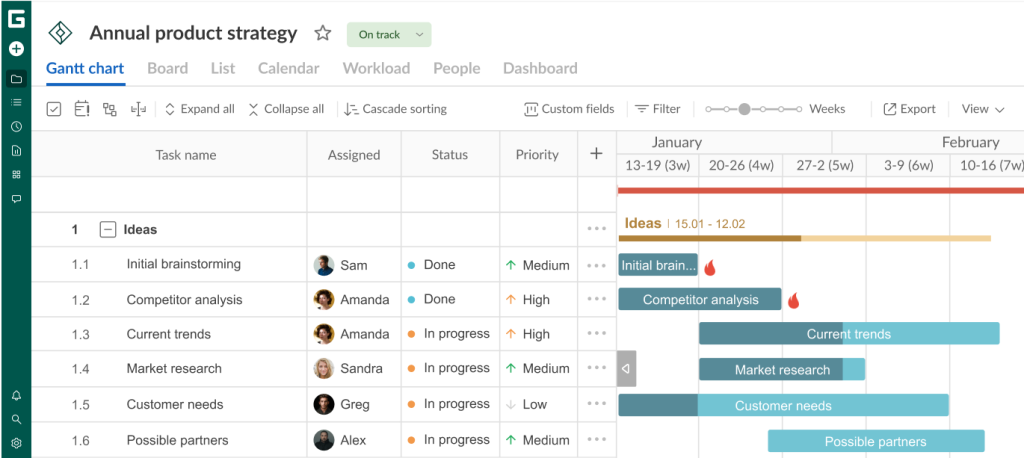
3. Budgeting
Establishing marketing budget needs and cost control are also practices involved in MRM.
It’s better to assess your current needs and the resources you have to cover in the initial stage of marketing project planning. This assessment will help you define the required resources and establish your marketing budget needs.
Marketing project managers need to set values and costs for all types of their project resources.
Using such marketing planning software as GanttPRO, they can define the cost:
- Per item for material resources.
- Per hour for labor resources.
- With a fixed value.
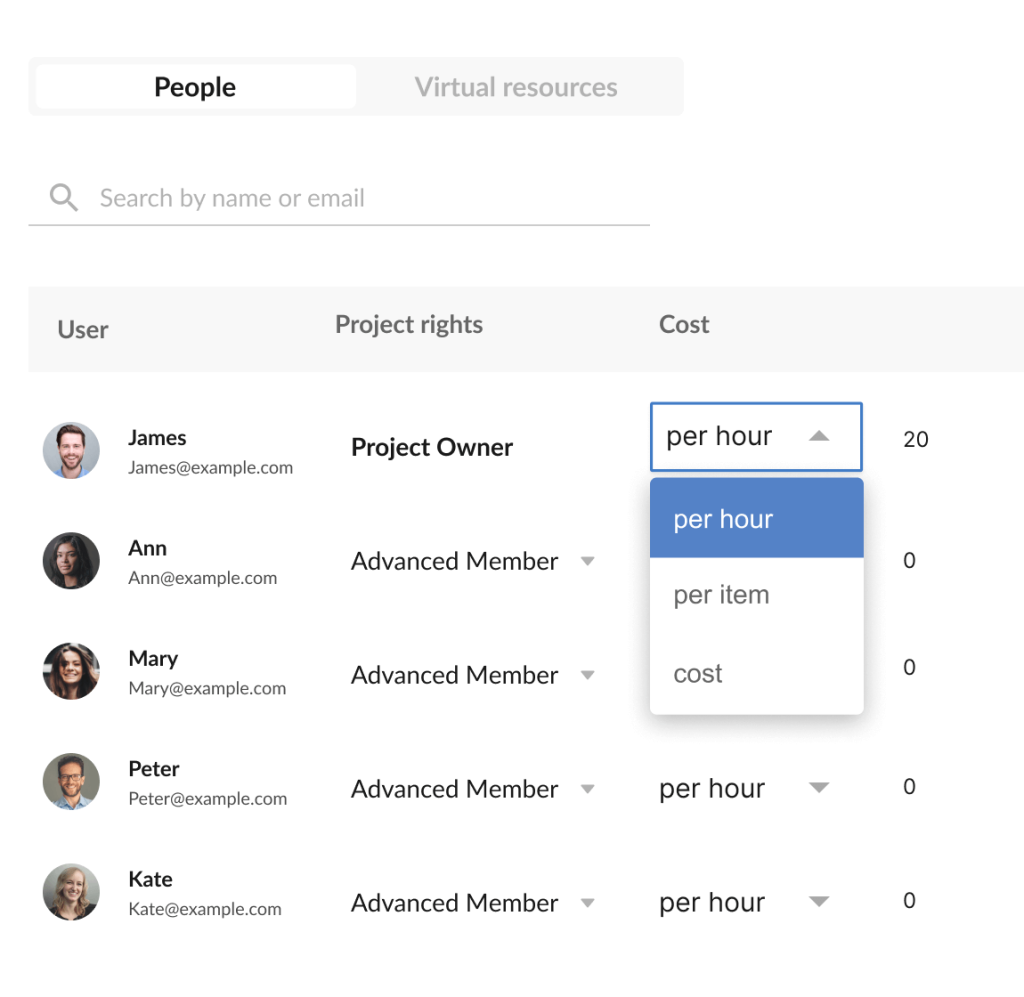
The timeline with budgeting can be shared with team members, other departments, or vendors if needed.
You can easily export the GanttPRO diagram in PDF, PNG, XML, or Excel formats.
Marketing teams choose GanttPRO for professional features and advanced opportunities considering it highly-demanded marketing project management software.
4. Constant collaboration
Effective marketing resource management requires seamless collaboration and communication between specialists involved in projects. It is always important for office professionals and remote workers.
They need trustworthy functionality for chatting, digital asset management, file sharing, content management, event coordination, online proofing, etc.
GanttPRO is also useful here. It helps achieve transparency and improve team collaboration, providing advanced opportunities for flawless communication.
You can leave comments, receive notifications, and add attachments to stay up to date and not miss essential information.
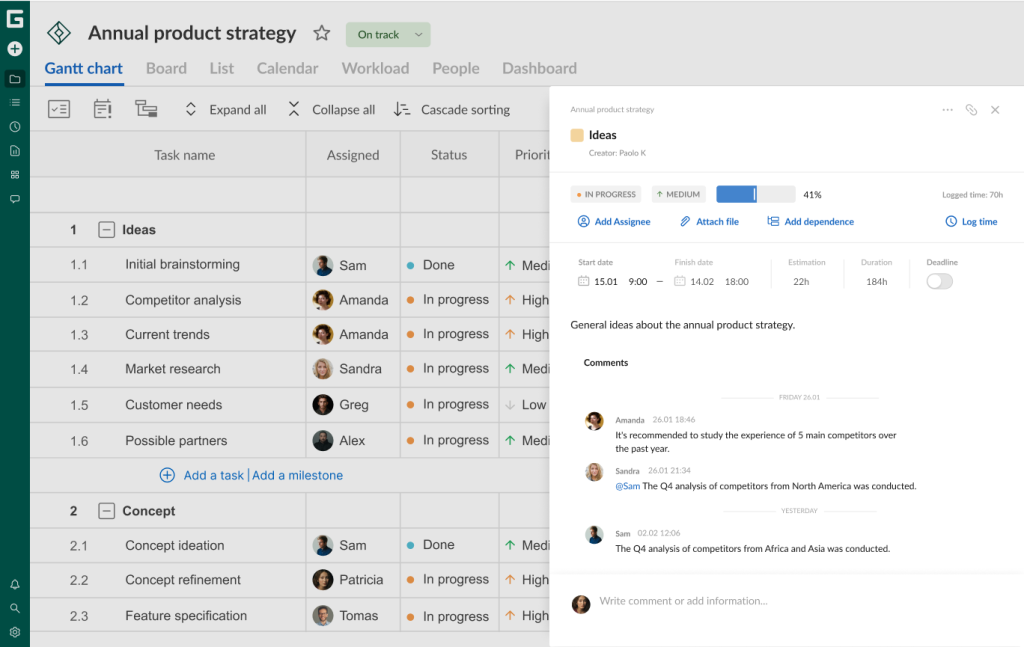
5. Role-based access
Another crucial aspect of MRM marketing resource management relates to ensuring the right people have permission and access to the right information and assets for a particular project.
Project managers need to take this aspect to ensure the tasks within their marketing projects are completed by qualified and reliable specialists.
For example, GanttPRO allows managers to provide their teammates with special rights to view data. They can work with different account roles and project rights.
It means that different specialists can get different access to settings and features as well as customize work.

Invest in MRM for better marketing results and overall business success
Professional marketing resource management is aimed at coordinating various marketing resources and assets to effectively achieve global objectives.
If implemented correctly, MRM can help overcome challenges and make life easier for marketing teams.
Don’t miss the opportunity to improve resource management in marketing projects and take into account the best MRM practices. It will ensure the efficiency and effectiveness of all your marketing efforts.
Frequently asked questions about marketing resource management
-
MRM marketing resource management refers to the strategic process and software solutions used to efficiently plan, execute, and optimize marketing activities and resources. MRM involves the allocation and management of budgets, assets, personnel, and other resources to ensure that marketing campaigns and initiatives are executed effectively and in alignment with the overall business goals.

Fantastic guide! Clear, concise, and packed with actionable insights. Thanks for simplifying the complexities